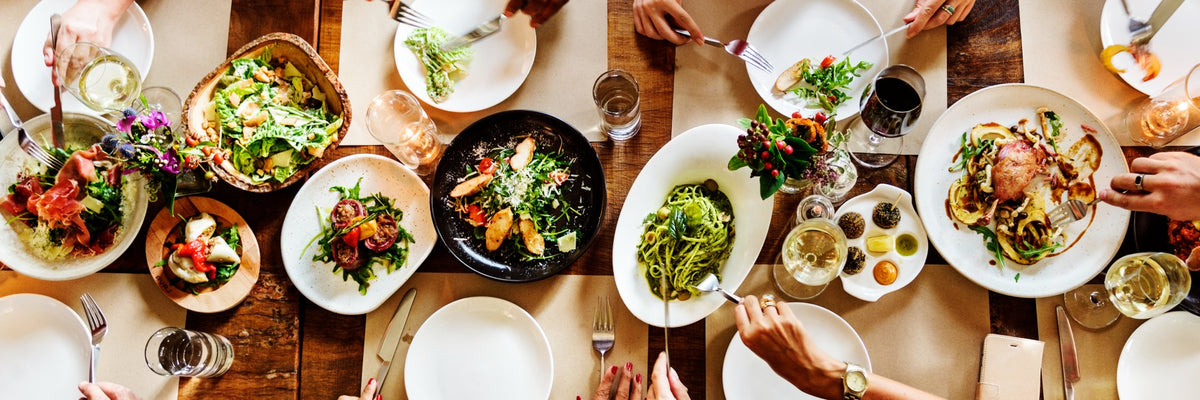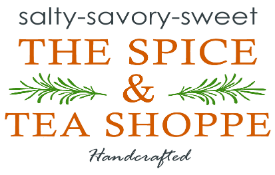
Bitters and Liqueurs
Bitters and liqueurs are underrated in America’s collective consciousness. We tend, and I very much include myself in this estimation, to glorify brewing and distilling. The zeitgeist of Prohibition era America was morphed into a caricature: the “heroic bootlegger.” This is now an almost aspirational figure, carrying enough prestige on its own to maintain the buzz of what has been called America's “craft-beer revolution.”The groundwork that allowed for this explosion of variety was laid at the sunset of Prohibition with the development of a three-tiered system: producers, distributors, and retailers. I admit, it’s fascinating to dip into the history of beer in America and see how the sequencing of laws and regulations sparked a cultural movement that persists and thrives today. More interesting, I think, are niche layers within that cultural movement; the subset within a subset, sparking a counterculture and echo that became known as the Cocktail Revival.
Now, I’m not a historian, and there are many arguments to be made that the Cocktail Revival is over. Sadly, we won’t know the extent of a cultural movement until it is well in the past and we’ve had time to digest the nuances to the fullest, but adding my opinion; I don’t think this era is over. I think it’s just moved indoors. Even before Covid-19 locked everything down, people were more and more exploring cocktails in the home. Being a freelance mixologist is made easy these days by the simple availability of knowledge. Enter a question into your search bar and you’ll find answers for your home bar. The internet is ready to transport you into the world of DIY infusions and “How to bitters” for “better this” and “smoother that.” Welcome! This article is an introduction into that world. As I said, a subset of a subset…
Liqueurs
What exactly is a liqueur? For our purposes, a liqueur is an infusion composed of distilled spirits and additional flavorings, one of which is almost always a sweetener. If that definition sounds a little wishy-washy, that’s because it is. Liqueurs are troublingly difficult to define if you dig too deep, but they are deliciously easy to make at home.
The Tools
Weirdest first, an alcohol hydrometer, or more precisely, a Proof and Tralle hydrometer. This will measure alcohol by volume (ABV), which is important not only to be safe and accurate, but if you find yourself in a place in the world where you need to mix a high proof neutral-grain spirit to get a desired ABV. Also provided is this online calculator, as many people may find themselves wanting to dilute their liqueurs or bitters to their desired ABV and a hydrometer isn’t accurate once sugar comes to the party. Next, a kitchen scale, followed by a couple measuring cups, some cheesecloth or a muslin bag and, for the bitters, a coffee filter. Optional are a few mason jars to do the infusing and cute bottles for your bitters.
A “Strong, Neutral” Spirit
Flavorings
Botanicals, nuts, fruits - coffee is especially chic right now, but the suggestion for starting this is to raid the spice cabinet: rosemary, cinnamon, ginger, nutmeg, dried chamomile flowers (a personal favorite), and I’d be remiss not to mention tea. I will say that whatever your flavor adventures, please do your research, and make sure it’s edible. With all things culinary, proceed with caution.
Infusing
This is straightforward; take your base and your flavorings and put them together in a clean, sealable container. It’s expected that your ingredients are swimming in the alcohol, not merely submerged (you’d be making bitters in that case, but more on that later). Then, let it sit in a cool spot away from sunlight for several days. When is it done? That depends on a lot of things. How powerful were your flavorings? How powerful was your alcohol of choice? Truth is, you’re looking at a range of about 2 days to 2 months…I know that sounds ridiculous, but that’s because it’s heavily based on your personal tastes. Just give the mixture a shake every day and a taste every other day. Once it’s to your liking, strain it with some cheesecloth or a muslin bag to remove the solids. Generally, liqueurs come in between 15-30% ABV, so add distilled water to bring your liqueur to the desired ABV. Keep in mind that if you’re going to add a lot of sugar, this will also affect the final ABV, so use the calculator above to help. Remember, these ABV suggestions keep with the general field of liqueurs, but there are a few that clock in at 55% ABV. However, those high proof liqueurs are outliers among an otherwise more reasonably diluted category of spirits.
Make it Sweet…Or Not
Technically, to be a liqueur, it must have 2.5% sugar by weight, so get your scale ready. If your palette gravitates towards liqueurs with “crème” somewhere on the bottle, they often begin at 25% or more sugar by weight. Table sugar or simple syrup are the common sweaters of choice, but people often use honey, agave, maple syrup, even sucralose (Splenda) and Stevia find their way into home infusions if the crafter is so inclined. Recommendation: start at that 2.5% by weight…then taste. Add a little more sweetener…mix…taste. Do this until you like it. It’s worth noting that if you plan to age your liqueur (people often leave them for 2-3 months for the flavors to meld), this will soften the final product and round the ethanol edges, so go slightly shy on the sweetener. You can always add more later.
What of Bitters?
Shockingly, the methods are almost identical: solvent A meets flavor B in their clean, sealable vessel of choice, and have a vacation in a cool spot away from the sun. Rather than swimming in the alcohol, your ingredients should be only just covered for maximum extraction. The real difference between bitters and liqueurs is the purpose of the final product. Bitters are called bitters because they are just that, bitter! They are concentrated additives used to bring complexity where things might otherwise be flat. While they are usually used in a cocktail - the Sazerac, touted as America's first cocktail, certainly has bitters in the recipe, one or two dashes have been known to find their way into ice cream and coffee in my personal experience. They can technically also be imbibed straight. A shot of pure angostura bitters is hilariously known in some countries as “The Bartender’s Handshake.”
The Bitter Method
It’s worth it to look for an ABV at or above 50% for bitters. You're looking to really extract the flavors from your ingredients and that higher ethanol content is what you need to do it well. Bitters, unlike liqueurs, are often unsweetened, though this too is not at all a rule. The real choice for the home bitterer is whether to go all-in-one or do separate infusions.
All-in-One
It’s in the name; you put together all the ingredients you want in your bitters in one vessel. You submerge them in your spirit of choice, agitating them every day and tasting every couple of days until they have the properties you’re looking for (a few days to a few weeks). Strain your solution through a coffee filter to remove the solids and bottle in your clean vessel of choice. If you have a recipe for bitters you want to try, this method is for you.
Separate Infusions
This is my preferred method for granular control. You can make multiple infusions, each representing just one ingredient, then mix them together to create your own unique bitters that are tailored to your personal tastes. It’s the same method as above: submerge, agitate, wait, taste, strain, and bottle. The additional fun with this comes with the experimentation; putting together 10 parts orange peel, 5 parts cocoa nib, and 2 parts ginger just to see what that’s like. Fyi…it’s spicy.
A word of warning when tasting: bitters often contain things like clove, gentian root, barks, zests, etcetera, so it’s recommended that you put one or two drops in an ounce or two of water to taste rather than take them straight. This will also reflect how they disperse in a fluid, which is especially handy to know for making cocktails.
Hey, you made it all the way to the bottom. That’s comforting. It shows a passion (maybe just a patience) for this imprecise methodology. That may be what connects us. Not just you and I, but backwards in time to those first brewers and apothecaries, those first alchemists and sages, mixing and mashing until they made something that echoed through time. Maybe that’s too romantic. Too imprecise. But, if you didn’t have a bit of romance in you, would you really be making this stuff?
Let's Get Cooking
For more culinary inspiration, be sure to visit our recipe page. Here, you'll find a diverse collection of delicious recipes for every taste, season and occasion.

